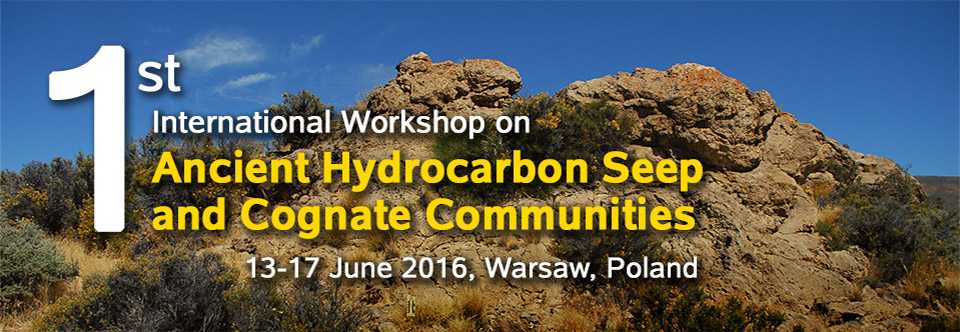
PALEOCENE WOOD-FALL COMMUNITIES FROM HOKKAIDO, JAPAN
Kazutaka AMANO1, Robert G. JENKINS2, and Steffen KIEL3
1Joetsu University of Education, Department of Geoscience, Joetsu 943-8512, Japan; 2Kanazawa University,
School of Natural System, College of Science and Engineering, Kanazawa 920-1192, Japan; 3Swedish Museum
of Natural History, Dept. of Palaeobiology, Box 50007, 10405 Stockholm, Sweden.
Corresponding author: amano@juen.ac.jp
Fossilized wood is common in Paleocene deep-water deposits of the Katsuhira Formation in
eastern Hokkaido, Japan, and is often bored by wood-boring bivalves and associated with other
invertebrates. We recovered 42 such associations, which are preserved in small carbonate concretions
within dark gray mudstones. The associations consist of many small mollusks, corals and brachiopods.
Most common are deposit feeders such as the aporrhaid gastropod Kangilia inouei and
protobranch bivalves. Several associations included chemosymbiotic bivalves, namely Thyasira
sp. and the lucinid Myrtea ezoensis, as well as pectinodontid limpets which are known to feed on
wood. Minor faunal elements are the deep-sea suspension feeders Bentharca and Propeamussium,
and predators and scavengers like naticids, buccinid, cancellariid, turrid, cylichnid and ringiculid
gastropods. These Paleocene wood-fall communities resemble those from Upper Cretaceous strata
in Hokkaido, Japan and from Eocene to Oligocene strata in Washington State, USA by sharing
nuculanid bivalves, Thyasira and limpets. Interestingly, provannid gastropods are absent from the
Paleocene communities, despite their presence in the above mentioned older and younger examples.
The small bathymodiolin mussel Idas has also not been found in the Paleocene communities
reported here.
